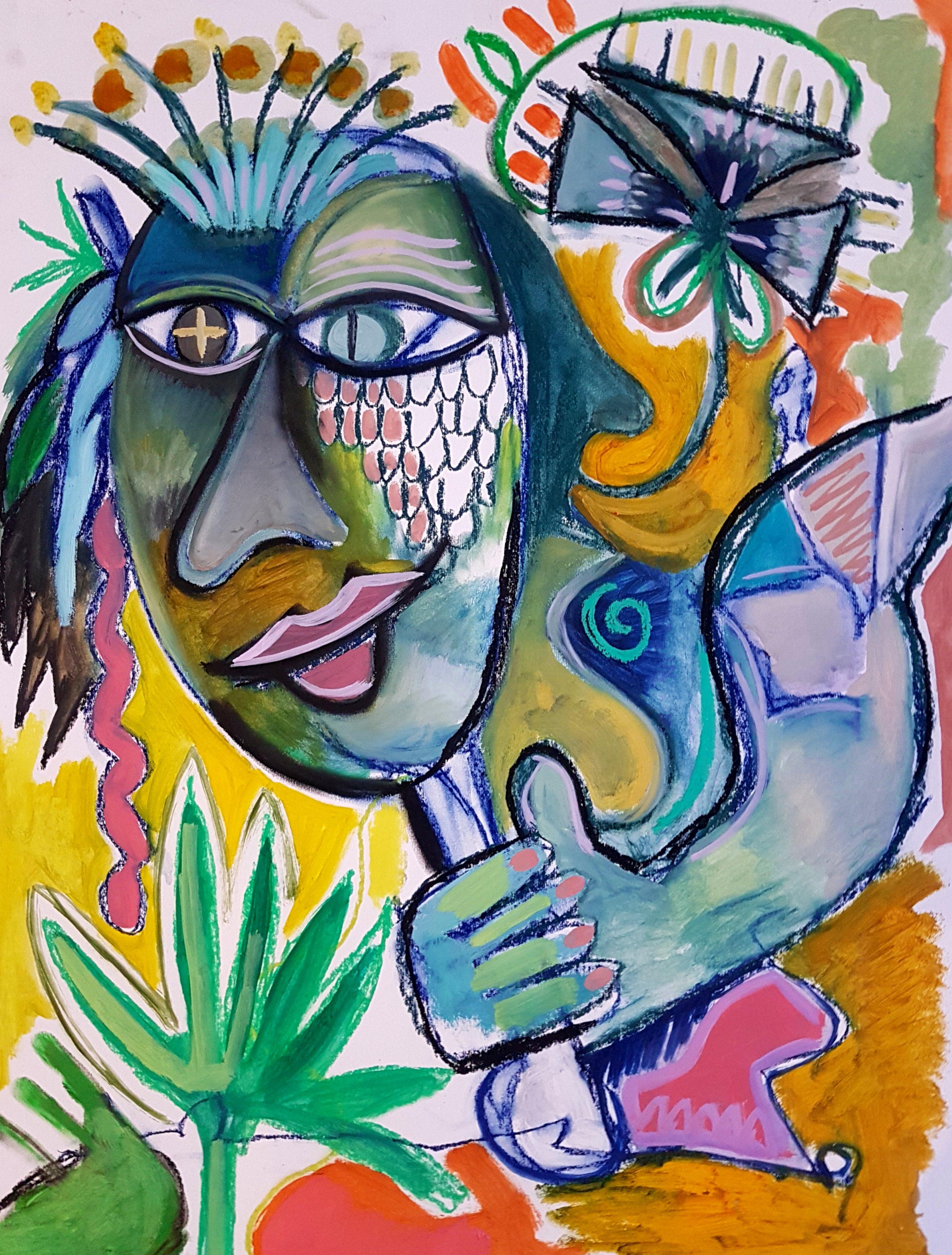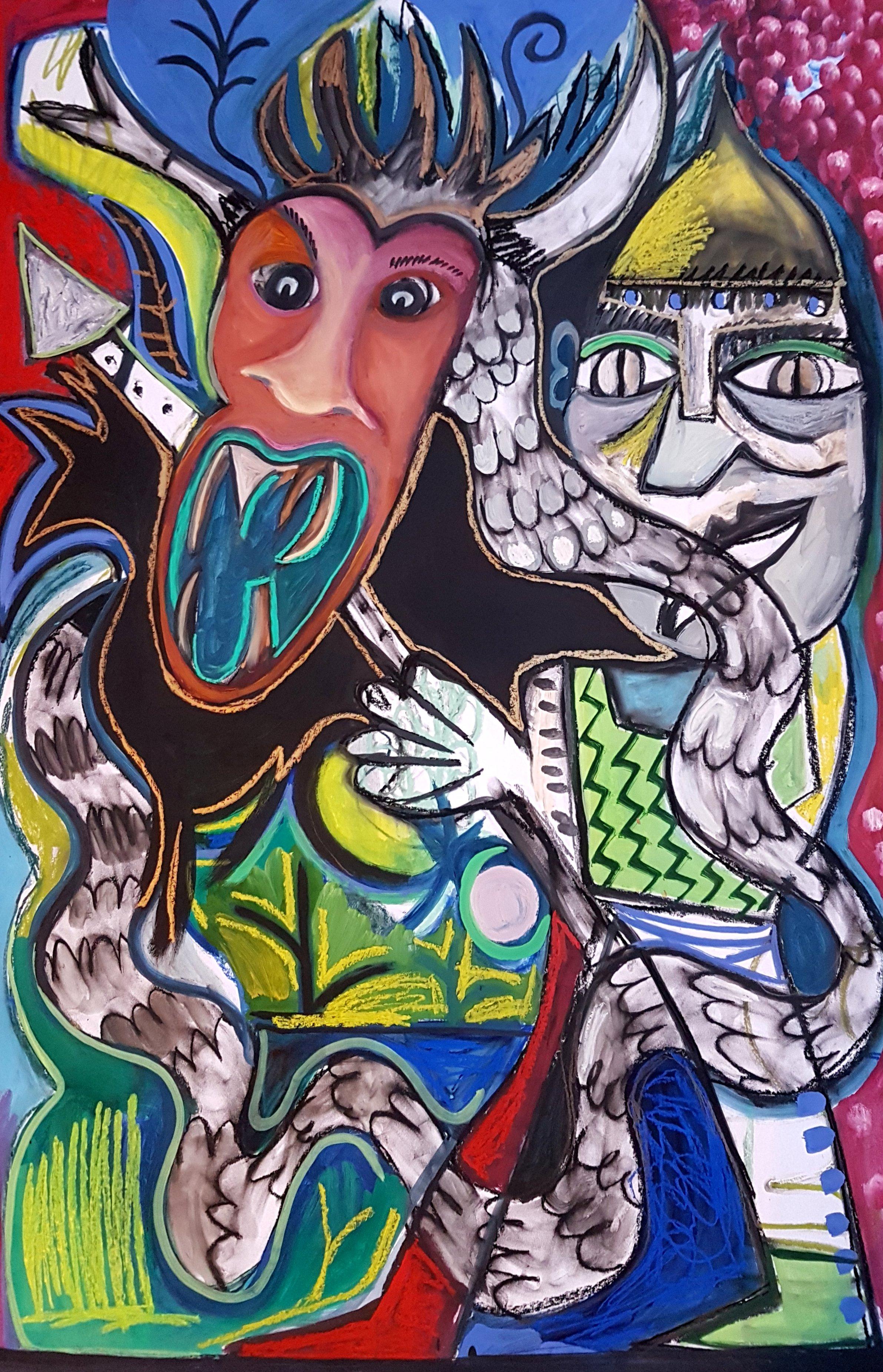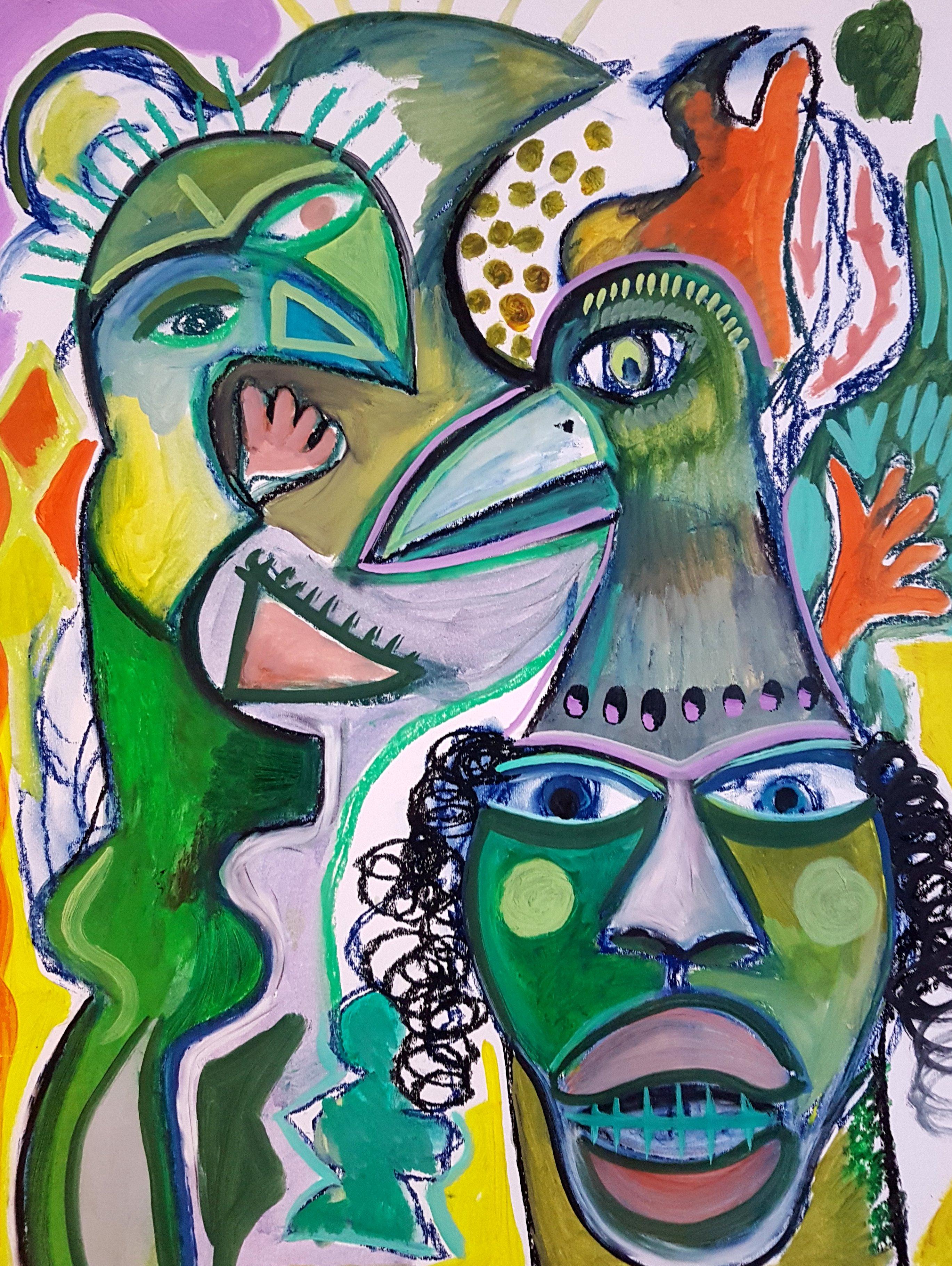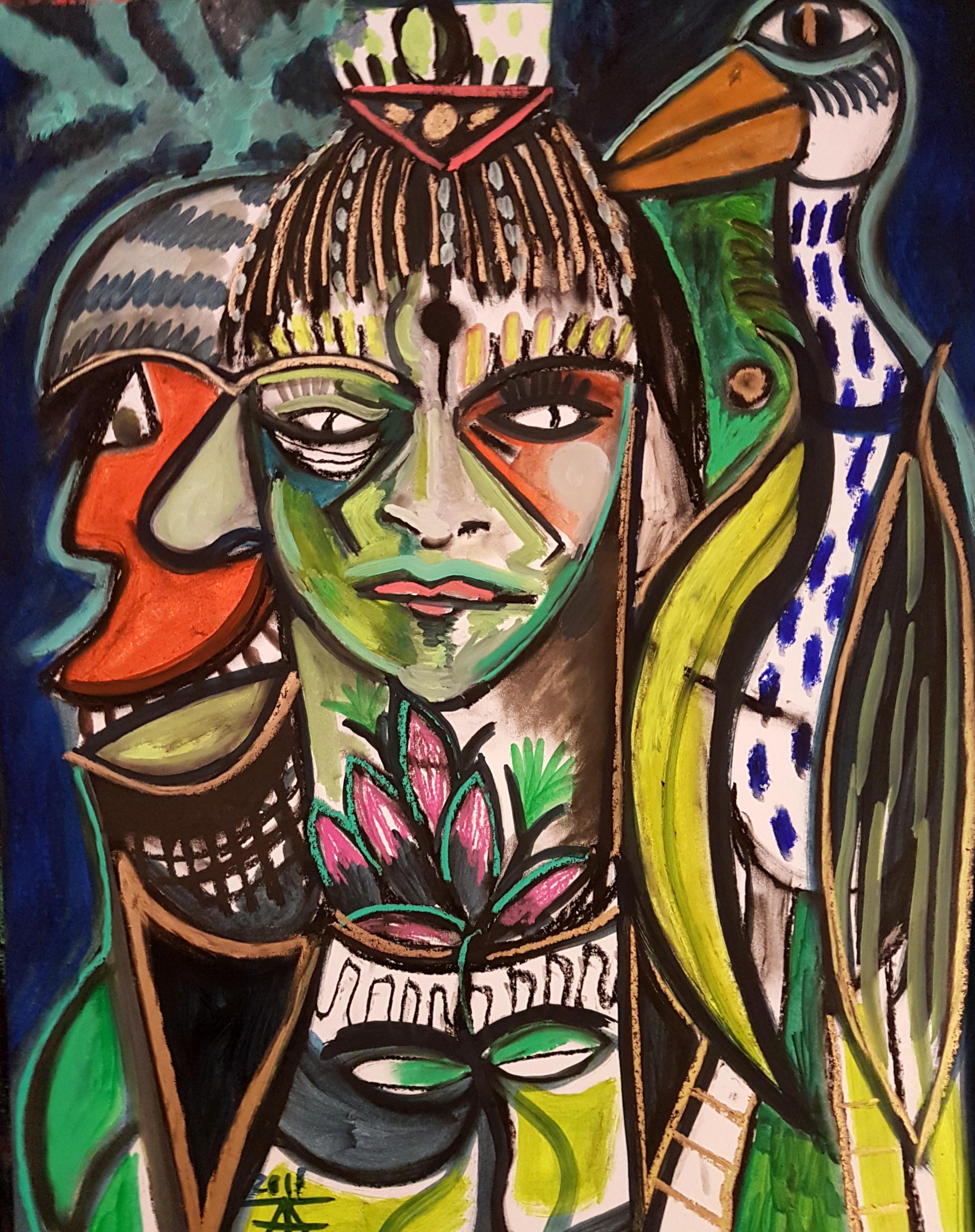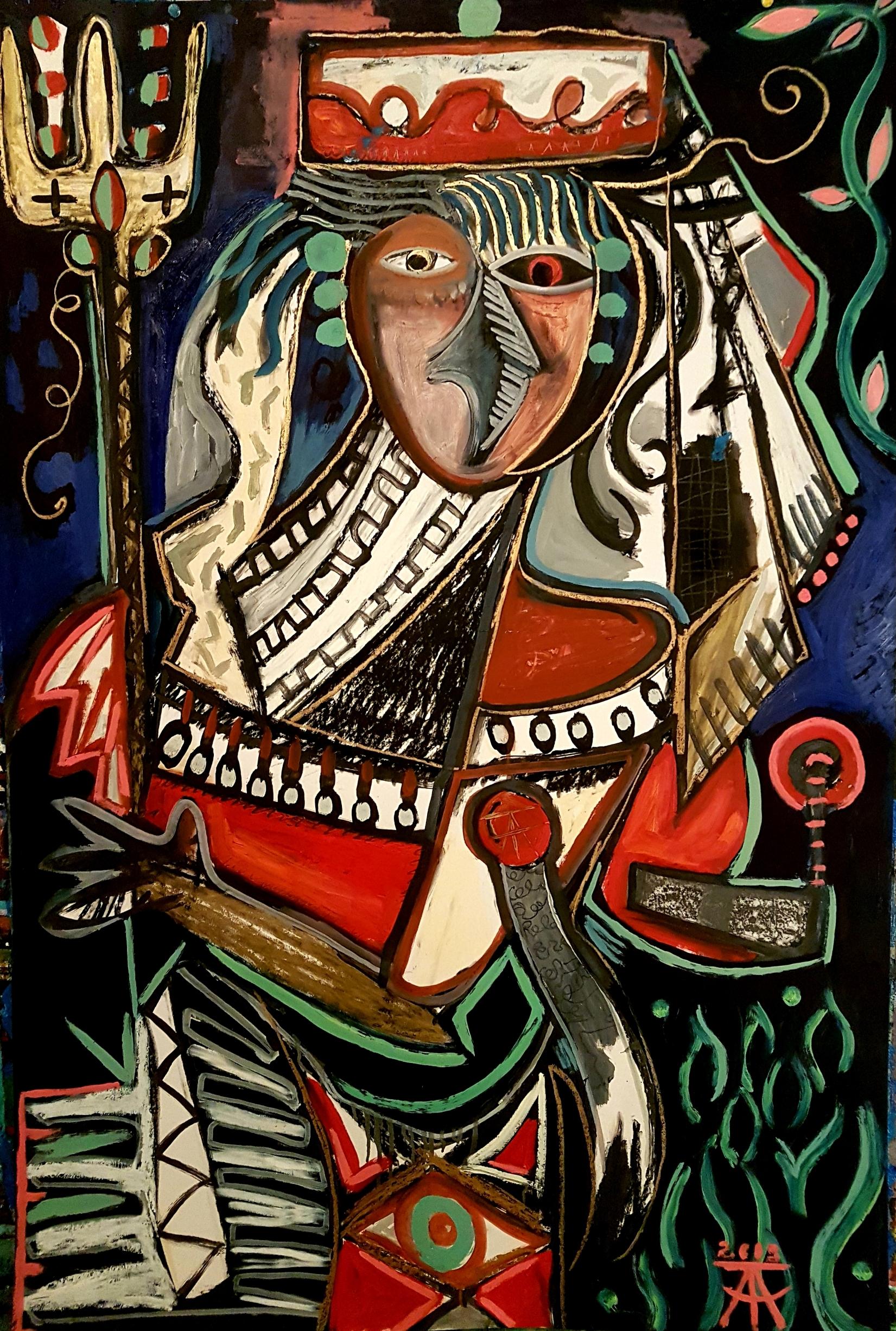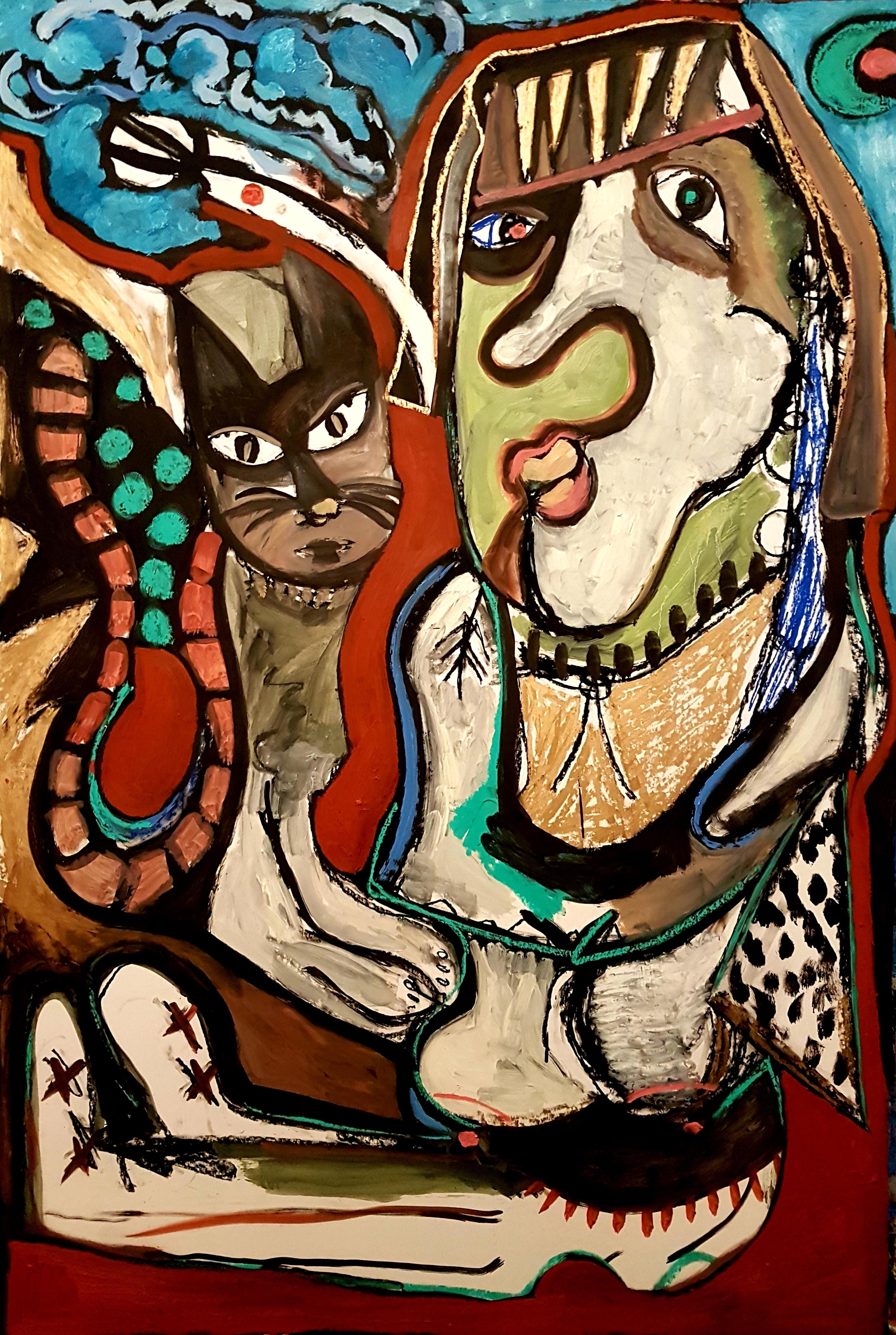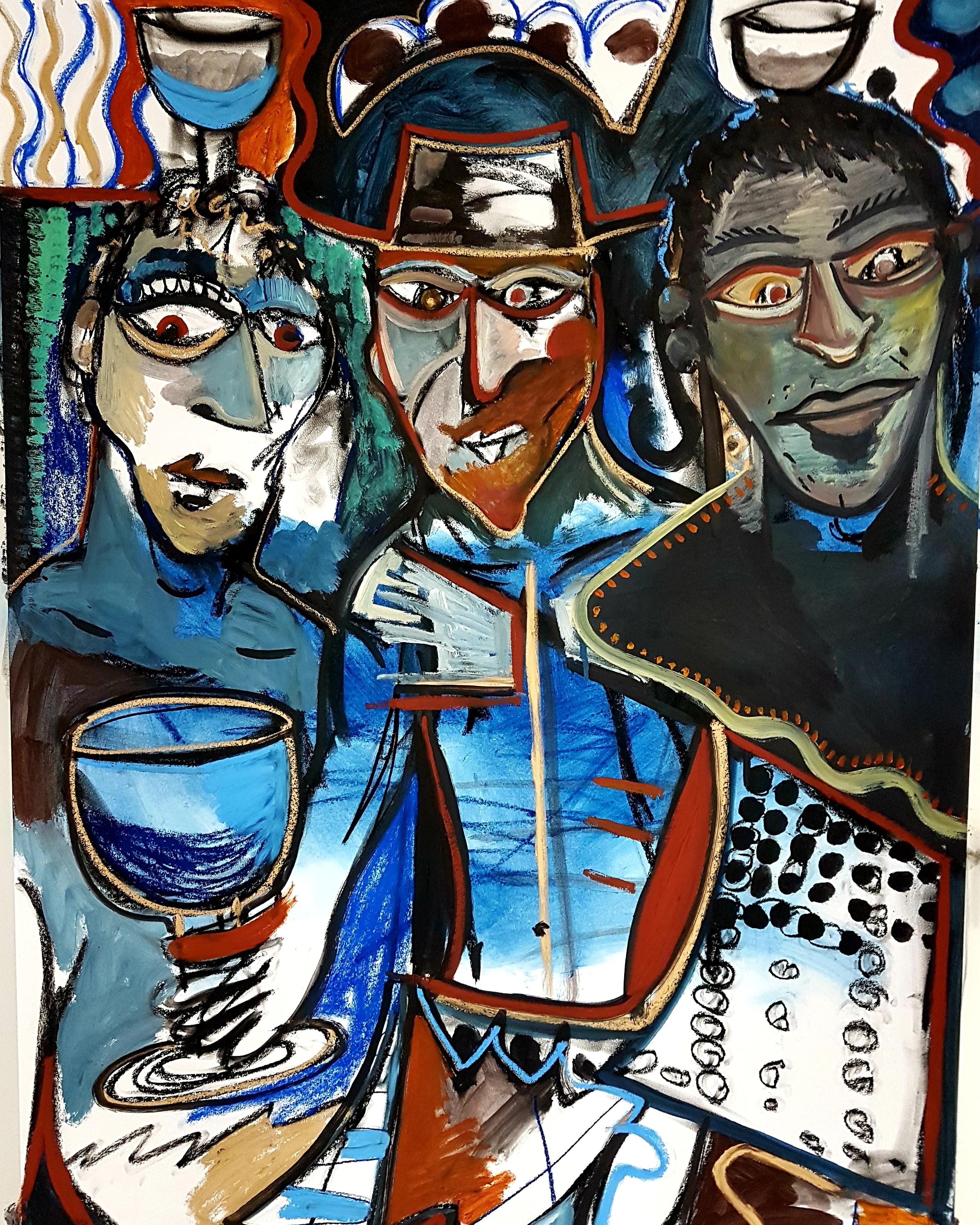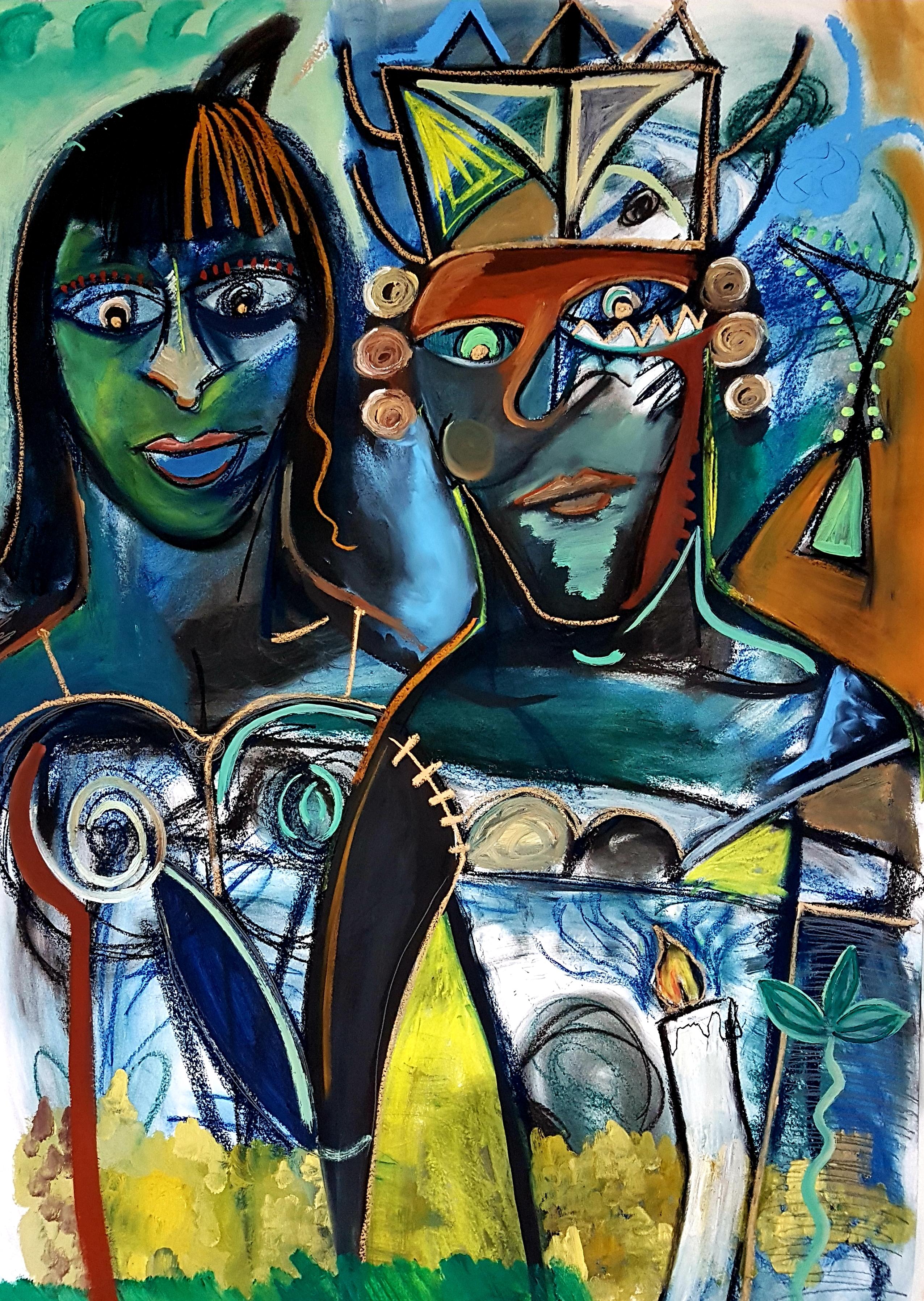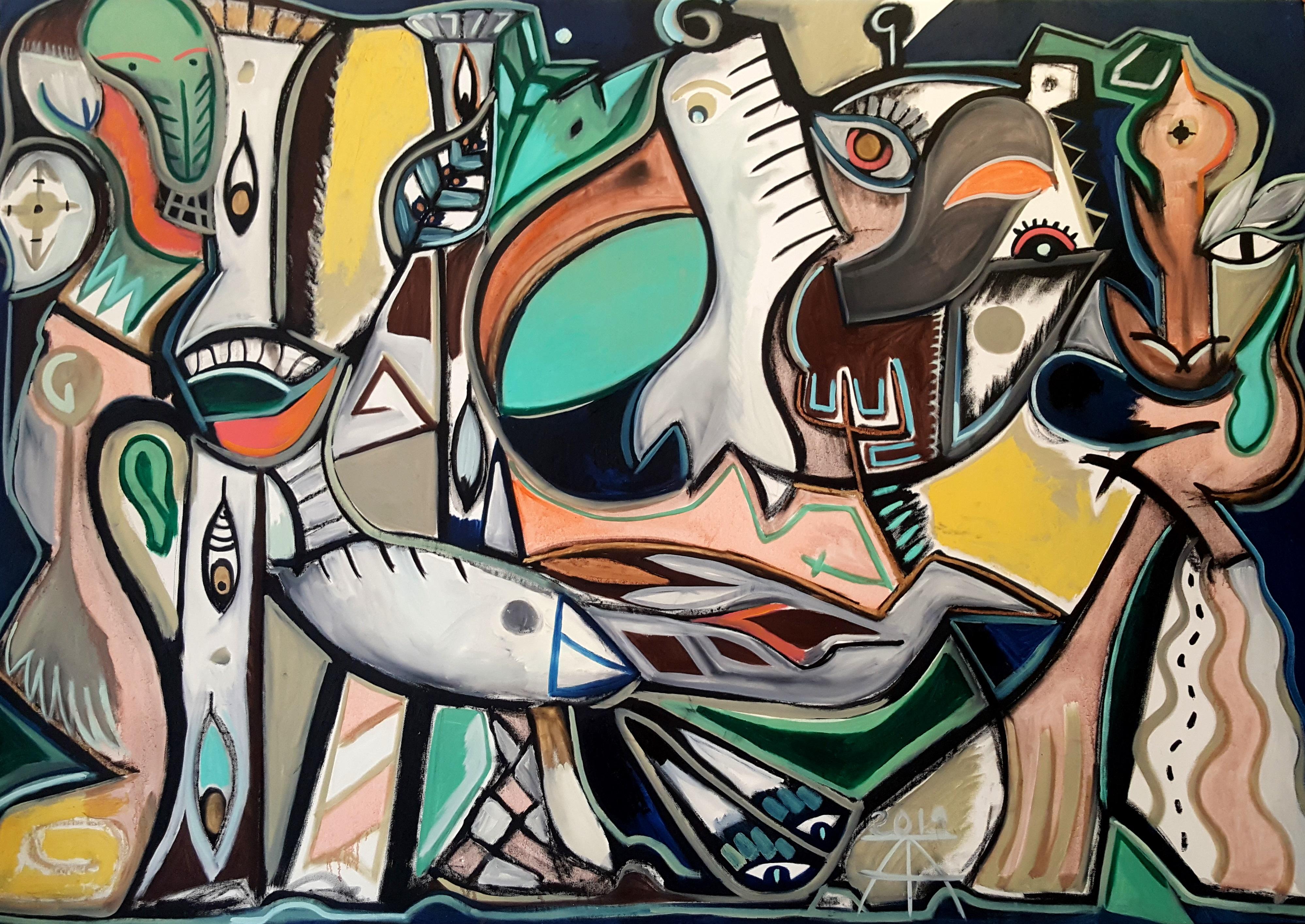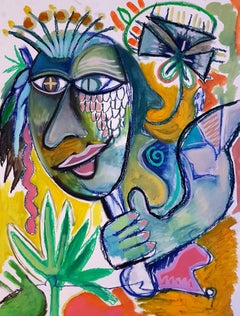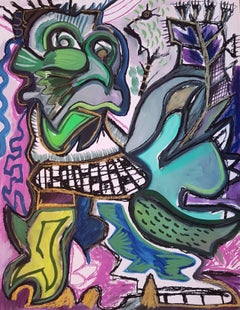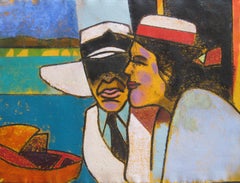
Klaus Kinski and Claudia Cardinale in Fitzcarraldo
View Similar Items
Want more images or videos?
Request additional images or videos from the seller
1 of 5
Richard MerkinKlaus Kinski and Claudia Cardinale in Fitzcarraldo1980 - 2006
1980 - 2006
About the Item
- Creator:Richard Merkin (1938 - 2009, American)
- Creation Year:1980 - 2006
- Dimensions:Height: 22 in (55.88 cm)Width: 29 in (73.66 cm)
- Medium:
- Movement & Style:
- Period:
- Condition:excellent.
- Gallery Location:Hudson, NY
- Reference Number:1stDibs: G140212227444
About the Seller
5.0
Platinum Seller
These expertly vetted sellers are 1stDibs' most experienced sellers and are rated highest by our customers.
Established in 1991
1stDibs seller since 2013
540 sales on 1stDibs
Typical response time: 2 hours
More From This SellerView All
- Blue (Sepia Toned Figurative Oil Painting of Boys on Bikes with Blue Ball)By Carl GrauerLocated in Hudson, NYBlue (Sepia Toned Figurative Oil Painting of Boys on Bikes with Blue Ball) Contemporary figurative painting based on a 1960's photograph, plays deeply on feelings of nostalgia and identity. oil on wood panel 20 x 20 x 2 inches Carl Grauer’s 'Blue' plays with the tension between memories, the “return to home”, and the actual experienced past through the renderings of the family unit. Inspired by images on found slides or old family photos, Grauer provokes mixed responses of delight and sadness, reminding us that unlike space, time cannot be returned. Grauer paints 'Blue' in black and white, sepia tones, and blue oil paint on wood to capture the nostalgia of a vintage 1950's photograph. Two young children ride bicycles in a charming landscape while one child holds a big blue ball. The blue ball beautifully contrasts with the sepia toned landscape. The brushstrokes are smooth, with little texture built upon the surface. About the work: Recollections, a series that plays with the tension between memories, the “return to home”, and the actual experienced past, is an idea that I explore through the renderings of the family unit. Nostalgia comes from the Greek word nostos, meaning “to return to home” and algos, meaning “pain”. Before the rise of pathological anatomy and bacteriology made it less credible, medically; nostalgia was considered a “disorder of the imagination. Through time, nostalgia’s meaning became a more generalized reaction to the sad fact that, unlike space, time cannot be returned. I initially began with source imagery of found slides and photos of people I find at flea markets, second hand stores or from my own family’s collection. I take the source imagery and change elements to signify specific moments that could be seen as memories that are remembered or forgotten. I aim to represent nostalgic scenes that may relay a tension, sorrow or humor that could be constructed memories or actual experienced events. The exact narrative may be forgotten or unknown, but the complex projection of an idealized story that I find intriguing may serve to reflect a feeling or memory for another person. CV 1975 Born in Wilson, Kansas, USA EDUCATION 1998 Bachelor of Arts – University of Kansas 2000 Mastor of Fine Arts – University of Michigan 2015 Portrait and Figure Painting – London Atelier of Representational Art EXHIBITIONS 2016 "Petit: A Group Exhibition of Smaller Sized Art...Category
2010s Contemporary Figurative Paintings
MaterialsOil, Wood Panel
- Portrait of a Woman II (Colorful Figurative Painting)By Abel RamirezLocated in Hudson, NY37" X 32" acrylic on cotton This colorful portrait of a young woman with auburn hair has vivid and bold black outlines that drip and define the sitter's face. She sits in front of a...Category
2010s Contemporary Portrait Paintings
MaterialsCotton, Acrylic
- Technicolor Portrait (Colorful Figurative Painting)By Abel RamirezLocated in Hudson, NY38" X 36 1/2" acrylic on cotton This colorful portrait of a young male has vivid and bold black and multicolored outlines that define the sitter's face. The black border drips into...Category
2010s Contemporary Portrait Paintings
MaterialsCotton, Acrylic
- A Wrestler, His Girlfriend, Their Dog (Figurative Oil of Athletes by Mark Beard)By Mark BeardLocated in Hudson, NYA Wrestler, His Girlfriend, and Their Dog Academic style figurative oil painting of a young man and woman with their dog in the gym locker room by Mark Beard 68 x 32 inches oil on canvas mounted on Masonite 75 x 39 inches framed This painting represents a segment of a large mural the artist was commissioned to paint for Abercrombie & Fitch's flagship stores. This painting was featured in the Manhattan's towering mural which stretched several floors. Beard worked on the commission in his NYC studio and completed the work in 2005. Painted in a style that evokes the portraits of John Singer Sargent, Mark Beard is a contemporary living artist who paints under the pseudonym, Bruce Sargeant, an English painter who worked during the 1920's and 30's. The contemporary figurative painting, made in a modern Academic style, features a young male athlete wearing a wrestling singlet...Category
Early 2000s Contemporary Figurative Paintings
MaterialsCanvas, Oil
- Barbara Gittings (Figuartive Painting of LGBTQ Icon in Gold Triptych Frame)By Carl GrauerLocated in Hudson, NYPortrait painting of LGBTQ icon, Barbara Gittings Entitled: "Barbara Gittings (Mother)" Painted by Carl Grauer in 2019 Oil and gold leaf on board 20 x 32 inches, 20 x 16 inches when closed Can rest on a surface or can be hung with two d-rings that are installed on the back This painting was made by Poughkeepsie, NY based artist, Carl Grauer, in 2019. It is part of the artist's latest series, The Lavender Temple of Their Most Fabulous, painted in tribute to the 50th anniversary of the Stonewall Rebellion. Here the artist depicts LGBTQ activist, Barbara Gittings, on a gold leaf triptych frame resembling a Catholic altarpiece. Gittings is further sanctified with a glowing gold leaf halo while holding a copy of "The Ladder". Scenes of homosexual rights protests are featured on the left and right side of the folding triptych. When closed, the painting measures 20 x 16 inches and depicts two female symbols on the front. The piece can be shown unfolded either resting on a surface or by hanging it with the two d-rings that are installed on the back. About Barbara Gittings: Barbara Gittings was a LGBTQ+ activist whose contributions had a significant impact on LGBTQ+ acceptance and rights in the United States. Born in Vienna, Austria in 1932 while her father served as a U.S. diplomat, she was the organizer of the New York chapter of the Daughter of Bilitis (DOB), the first US national lesbian organization and served as editor of the DOB magazine, The Ladder, from 1963-1966. In the 1960s, Gittings co-organized picket lines to raise awareness about the ban on employment of gay people by the U.S. government, the country’s largest employer at the time. She also was part of the movement to persuade the American Psychiatric Association to remove homosexuality from the Diagnostic and Statistical Manual of Mental Disorders, which they stopped listing as a mental disorder in 1973. Her childhood experiences of finding very little literature or information about being gay inspired her to have a lifelong involvement with libraries, especially the American Library Association (ALA), to promote positive LGBTQ+ literature in libraries. She passed away in Kennett Square, Pennsylvania in 2007 and has awards from the ALA and Gay & Lesbian Alliance Against Defamation (GLAAD) named after her. “Equal treatment — no more, no less — is what we want! And compassion— which many homosexuals gladly swallow because they think it represents an improvement in attitudes toward them — is not equal treatment.” – Barbara Gittings More about the series: In tribute to the 50th Anniversary of the Stonewall Rebellion, Poughkeepsie based artist Carl Grauer debuts The Lavender Temple of Their Most Fabulous, a new series depicting notable figures of the LGBTQ+ movement. Portraits of gay rights advocates, such as Harvey Milk...Category
2010s Contemporary Portrait Paintings
MaterialsGold Leaf
- Portrait of Dave Winfield, American Major League Baseball Right FielderBy Edward AvedisianLocated in Hudson, NYPortrait of Dave Winfield Edward Avedisian 20 x 14 inches, acrylic on stretched canvas Armenian-American artist, Avedisian was best known for his work made in New York City during the 1960s: brilliantly colored, boldly composed canvases that combined Minimalism’s rigor, Pop’s exuberance and the saturated tones of Color Field painting. He was largely recognized for a series of Beach Ball paintings that emerged in the early 1960's and into the later 1960's the artist began painting larger horizontal paintings, featuring vertically intersecting beacon-like stripes that highlighted characteristics from both the Post-Painterly and Color Field movements. In this portrait, Avedisian using his signature use of color, combining bright rusty reds and oranges against a metallic green gold backdrop. A major work from Avedesian's color-stripe series was featured on the cover of Artforum's January 1969 issue (pictured here). Also pictured are photographs of the artist c. 1970 in his studio in New York City and catalog pages from Avedisian's inclusion in the American Painting Now Expo at the Institute of Contemporary Art in Boston, MA in Dec 1967 - Jan 1968. The exhibition, organized by art critic Alan Solomon, featured one of Avedisian's signature Beach Ball paintings alongside large works by Robert Motherwell and Jim Rosenquist. About the subject: Dave Winifield is American former Major League Baseball right fielder born in 1951 and who played for six teams (San Diego Padres, New York Yankees, California Angels, Toronto Blue Jays, Minnesota Twins, and Cleveland Indians) during his 22 year long career. He had the winning hit in the 1992 World Series with the Blue Jays over the Atlanta Braves. Winfield retired in 1996 and was elected to the Baseball Hall of Fame in 2001, in his first year of eligibility. About the Artist: In the 1960’s, Edward Avedisian was one of the youngest of those luminaries producing a grand new abstract painting. Shown first at Ivan Karp and Dick Bellamy’s Hansa Gallery and then at Robert Elkon, Avedisian’s insouciant mix of pop playfulness, color field cool and high formalist style put his art in a unique, and at the time generously rewarded, position. Paintings made it onto the cover of Artforum, were purchased by all the major museums, were among the few abstract works shown as representative of America’s post-war achievement at Expo 67 in Montreal and comprised a cornerstone in histories of the period written by Barbara Rose, among others. The artist was largely influenced by his Color-Field predecessors, Mark Rothko and Barnett Newman. Throughout the 1960's and into the mid 1970's the artist was celebrated in the Manhattan art scene, contributing to the Post-Painterly Abstraction movements with contemporaries Helen Frankenthaler, Andy Warhol, Jules Olitski, and Larry Poons. Museum Collections: Albright-Knox Art Gallery, Buffalo, New York Brooklyn Museum, New York Chrysler Art Museum, Norfolk, Virginia Denver Art Museum, Colorado Flint Institute of Arts, Michigan Jack S. Blanton Museum of Art, Austin, Texas The Larry Aldrich Museum, Ridgefield, Connecticut Metropolitan Museum of Art, New York Minneapolis Institute of Arts Minneapolis Society of Fine Arts Neuberger Museum of Art, State University of New York, Purchase Los Angeles County Museum, California Neuberger Museum, SUNY, Purchase, New York Parrish Art Museum, Water Mill, New York Solomon R. Guggenheim Museum *above description text is supported by Alexandra C. Anderson's article on Edward Avedesian in Artforum's January 1969 issue. NY Times Obituary, published Aug 23, 2007 by Roberta Smith: Mr. Avedisian was best known for his work in the 1960s: brilliantly colored, boldly composed canvases that combined Minimalism’s rigor, Pop’s exuberance and the saturated tones of Color Field painting. A frequent motif was a cluster of bright seedlike orbs corralled at the center of a vibrant monochrome field by larger rings of color, creating an image that could resemble a buoyant cross-section of some unknown fruit. Mr. Avedisian was born in Lowell, Mass., in 1936 and studied art at the Boston Museum School. By the late 1950s he was living in New York, part of a generation of promising young painters that included Frank Stella, Larry Poons and Darby Bannard. From 1958 to 1963 Mr. Avedisian had six solo shows in New York galleries, including two at the Robert Elkon Gallery, where he continued to show almost every year until 1975. By the early 1960s Mr. Avedisian was a rising star. During that decade, his work appeared on the cover of Artforum, in “The Responsive Eye” exhibition of Op Art at the Museum of Modern Art and in four annuals at the Whitney Museum of American Art. His paintings were widely sought by collectors and acquired by major museums in New York and elsewhere. In the mid-1970s Mr. Avedisian moved to Hudson and became less visible. His paintings soon began shifting toward representation; he took to calling his abstract paintings “a period style.” But he continued to be well served by his feeling for color, scale and surface. His landscapes described his surroundings in blunt, flat shapes and singing hues reminiscent of those of Marsden Hartley and Paula Modersohn...Category
1980s Contemporary Portrait Paintings
MaterialsCanvas, Acrylic
You May Also Like
- The mask comes off -Timothy Archer, 21st Century painting, Figurative artBy Timothy ArcherLocated in Paris, FROil paint, pastel and charcoal on paper Signed and dated by the artist lower rightCategory
2010s Contemporary Figurative Paintings
MaterialsPaper, Charcoal, Oil Pastel, Oil
- St Georges fighting the dragon -Timothy Archer, 21st Century paint, FigurativeBy Timothy ArcherLocated in Paris, FROil paint, pastel and charcoal on paper Signed and dated by the artistCategory
2010s Contemporary Figurative Paintings
MaterialsPaper, Charcoal, Oil Pastel, Oil
- The dramatic entrance -Timothy Archer, 21st Century painting, Figurative artBy Timothy ArcherLocated in Paris, FROil paint, pastel and charcoal on paper Signed and dated by the artist lower leftCategory
2010s Contemporary Figurative Paintings
MaterialsPaper, Charcoal, Oil Pastel, Oil
- Head and feathers -Timothy Archer, 21st Century painting, Figurative artBy Timothy ArcherLocated in Paris, FROil paint, pastel and charcoal on paper Signed and dated by the artist lower leftCategory
2010s Contemporary Figurative Paintings
MaterialsCharcoal, Paper, Oil Pastel, Oil
- Incarnations with lotus flower -Timothy Archer, 21st Century painting FigurativeBy Timothy ArcherLocated in Paris, FROil paint, pastel and charcoal on paper Signed and dated by the artist lower leftCategory
2010s Contemporary Figurative Paintings
MaterialsPaper, Charcoal, Oil Pastel, Oil
- Lady peasant in regalia -Timothy Archer, 21st Century painting, Figurative artBy Timothy ArcherLocated in Paris, FROil paint and pastel on paper Signed and dated by the artist lower rightCategory
2010s Contemporary Figurative Paintings
MaterialsOil Pastel, Oil, Paper
